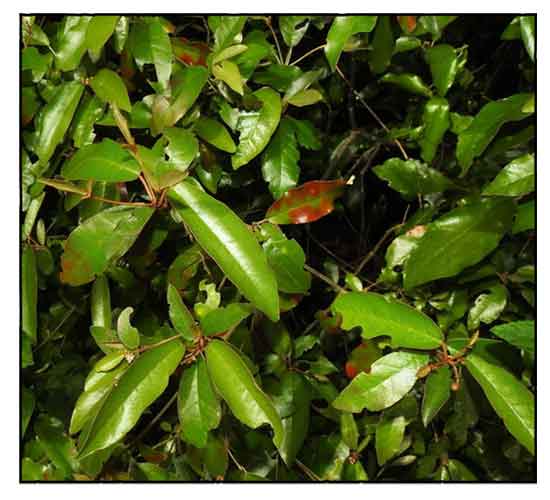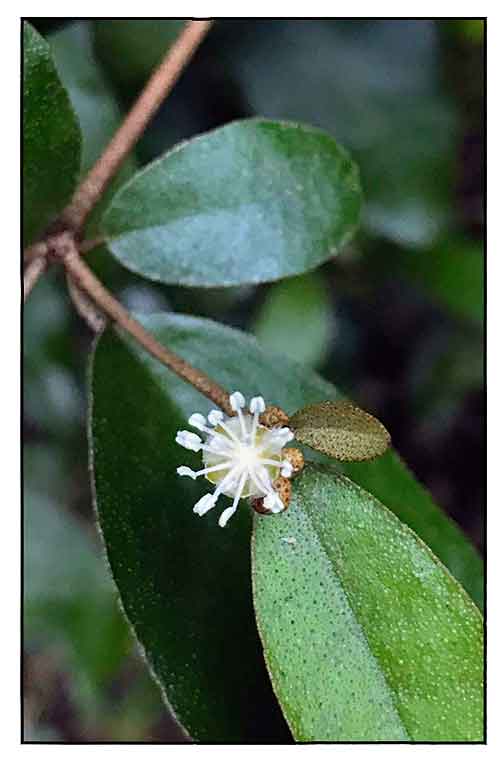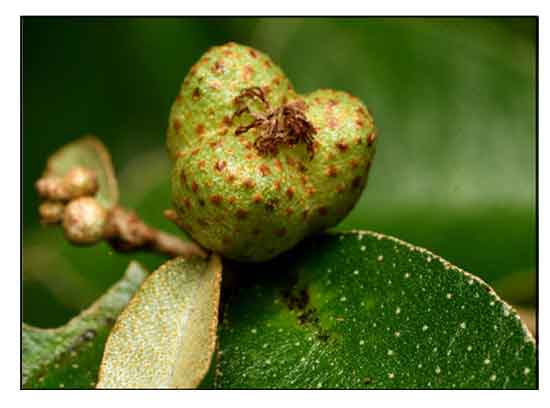
Family • Euphorbiaceae
Cascara
Croton cascarilloides Raeusch.
CASCARILLOIDES SPURGE
Yin ye ba dou
| Scientific names | Common names |
| Croton cascarilloides Raeusch. | Cascara (Tagalized) |
| Croton cascarilloides f. pilosus Y.T.Chang | Cascarilloides croton (Engl.) |
| Croton cochinchinensis Martyn | Cascarilloides croton spurge (Engl.) |
| Croton cumingii Müll.Arg. | Cascarilloides spurge (Engl.) |
| Croton cumingii var. angustifolius Gagnep. | |
| Croton pierrei Gagnep. | |
| Croton polystachyus Hook. & Arn. | |
| Croton punctatus Lour. | |
| Oxydectes cumingii (Müll.Arg.) Kuntze | |
| Croton cascarilloides Raeusch.: KEW: Plants of the World Online | |
| Other vernacular names |
| CHINA: Yin ye ba dou. |
| LAOS: Xa loht. |
| THAILAND: Ka-don hin, Plao nam ngoen, Plao lek, Plao ngoen. |
| VIETNAM: Cu den la bac. |
Distribution Properties Studies Availability |
May 2025
![]()
 |
| Â Â Â Â Â Â Â Â Â Â Â Â Â Â Â Â Â Â Â Â Â Â Â Â Â PHOTOS / ILLUSTRATIONS |
| IMAGE SOURCE: Croton cascarilloides / © Chen Shu / CC BY-NC / Image modified / Click on image or link to go to source page / / iNaturalist |
| OTHER IMAGE SOURCE: Croton cascarilloides / Flowering leaves / © Shih-Hsien Hsu / CC BY-NC-ND / Click on image or link to go to source page / / iNaturalist |
| OTHER IMAGE SOURCE: / Photos (2) / Pterocaulon redolens (Willd.) F.-Vill. / © Liu JimFood / CC BY-NC / Click on image or link to go to source page / iNaturalist |
Additional
Sources and Suggested Readings |
• |
DOI: It is not uncommon for links on studies/sources to change. Copying and pasting the information on the search window or using the DOI (if available) will often redirect to the new link page. (Citing and Using a (DOI) Digital Object Identifier) |
| Â Â Â Â Â Â Â Â Â Â Â Â Â Â Â Â Â Â Â Â Â Â Â Â Â Â Â Â Â Â List of Understudied Philippine Medicinal Plants |
| Â Â Â Â Â Â Â Â Â Â Â Â Â Â Â Â Â Â Â Â Â New plant names needed The compilation now numbers over 1,500 medicinal plants. While I believe there are hundreds more that can be added to the collection, they are becoming more difficult to find. If you have a plant to suggest for inclusion, native or introduced, please email the info: scientific name (most helpful), local plant name (if known), any known folkloric medicinal use, and, if possible, a photo. Your help will be greatly appreciated. |
• |
 |




